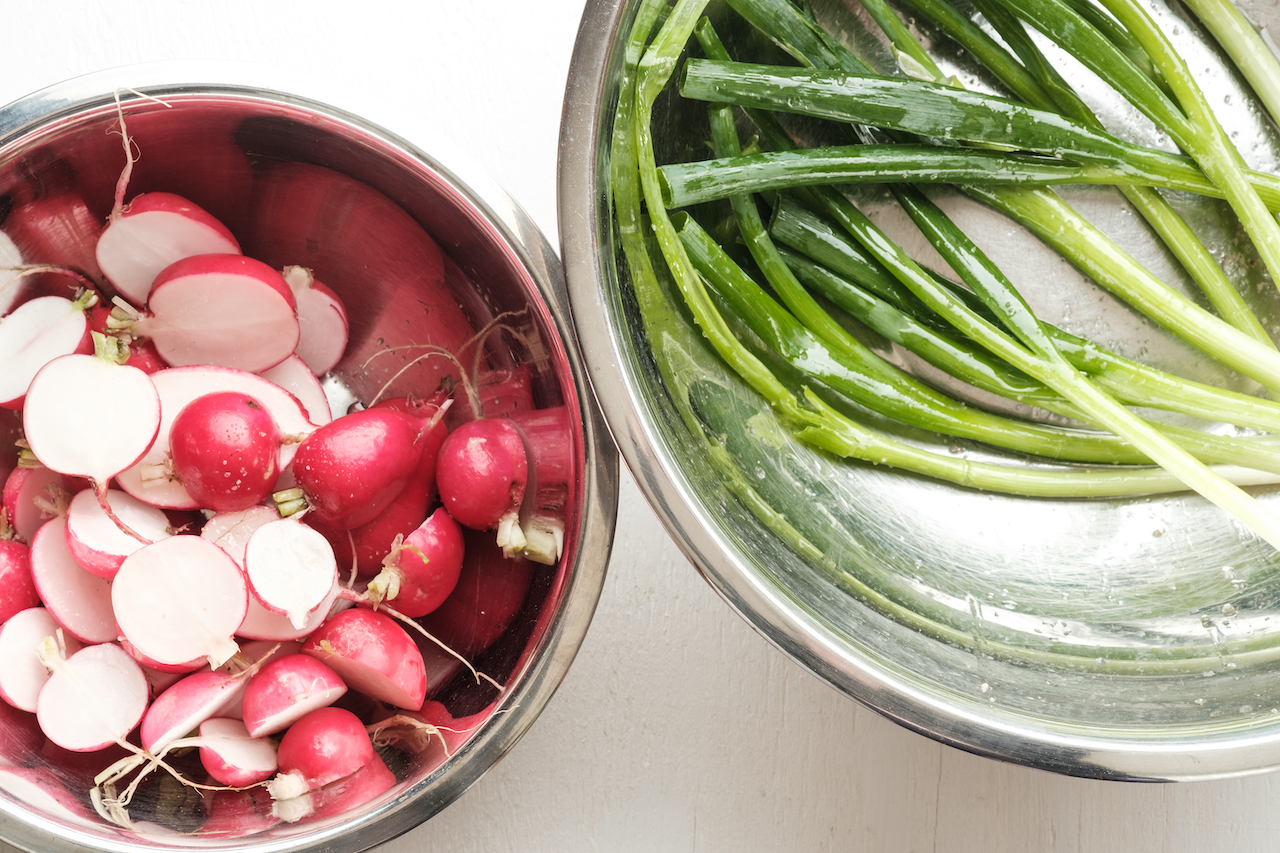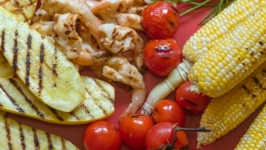Amuse Me
An amuse bouche is a small taste from the kitchen, customarily sent out as the guests are looking over the menu. Its translation is to amuse or gratify the mouth, and it gives you a welcoming feel for the food that is about to be served, helping you “settle in” for a great dining experience. Most guests think that the amuse is only found in fine dining restaurants, but it actually is very common in other restaurants as well, only in a different form.
As I was growing up, my favorite amuse was the relish tray that graced every supper club throughout Wisconsin. Not to be confused with the Lazy Susan, a rotating “platter from the Gods” that contained seemingly unlimited cottage cheese, corn relish, creamed herring, chicken liver pâté, pickled beets and cucumbers all surrounding a gluten mother lode of breadsticks, wheat thins, saltines and if you were lucky, the scarce Euphrates crackers. I’m talking about that rectangular tray embellished with celery and crinkle cut carrot sticks, pickles, pitted black olives, pickled cherry peppers, green onions and radishes.
The difference between a common and upscale presentation was the addition of crushed ice—to keep the vegetables crackling crisp—the carving of the radishes into “roses” and the green onions into frilly pom-poms. This might explain my unnatural lusting over salad bars later in life, which I consider the perfect meal.
In my childlike terms, I broke it down into the good, bad and ugly. Celery, carrots and pickles followed by the black olives that I would first use for finger cots before popping them into my mouth—yummy! The bad was the radish. I would nibble off a spicy “petal” or two for attention, but reject the rest. The pickled cherry peppers and green onion/scallions were the ugly, and no way were they getting anywhere near my ingress!
When my wife Angie and I made our first trip to Europe in the spring of 1985, we were amazed at the generosity of the restaurants. Before we had even ordered a beverage, food would appear: chilled mussels in Brussels, tiny sharp cheesy gougères in Switzerland, tasty slivers of marinated eggplant in Italy.
All were wonderful, but the one gift that I couldn’t forget was served in a small bistro just over the border in Nice. A small plate appeared filled with tiny radishes the size of shelled almonds with their bright green plumage intact, a wedge of unsalted butter and a small ramekin of coarse sea salt.
We dipped them in the soft butter and salt grains and savored them with the glee of foraging bunnies as the wiggling green leaves disappeared in our mouths. The radishes were crisp, sweet, zesty and a touch earthy with the rich butter and salt becoming the closing note of a perfect ensemble. This was the start of my radish obsession, from its simplest form on up to its many guises, both raw and cooked.
Spring in Wisconsin is about optimism and rebirth. It’s shoots instead of roots, young and vibrant vs. mature and muted. After wild onions and sorrel, the first seeded vegetables you’re likely to see are radishes. The key to a great radish is freshness, so look for bright, firm, crisp specimens. Available at any early-season farmers market, those first pickings are sublime for raw preparations. My favorites are the small red and white breakfast radishes with their fresh, vibrant green plumage in full display.
I am a prodigious fan of cooked radishes, where you can intensify their inherent flavor while balancing it with sweetness and acidity. The slightly larger specimens are just made for sautéing and braising. Chilled soup is the perfect vehicle for a sophisticated cooked radish flavor shot through with lemony acid, haunting cardamom and a touch of spicy ginger. The grilled radish and scallion (and the green radish tops if you have them) garnish helps to bring texture and a different radish flavor back to the dish.
Whether you serve this soup as a refreshing welcome or as a centerpiece of a spring repast, I urge you to take the leap from raw to cooked.
I always marvel at how tastes change as the “bad and ugly” of my youth have become stalwart components of my cooking arsenal! Now, every spring we look forward to our own early tiny radishes and green onions plucked from the backyard, and I don’t think I could truly relish spring without them.








